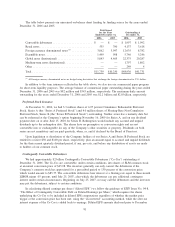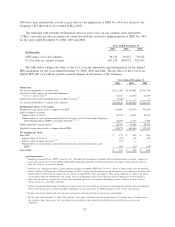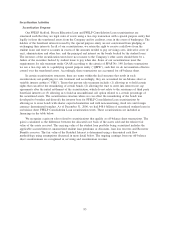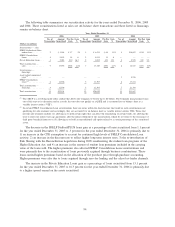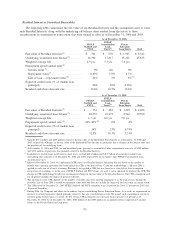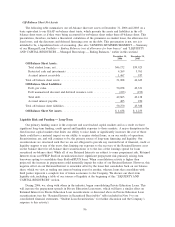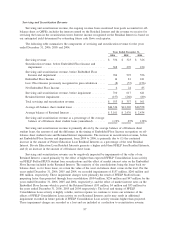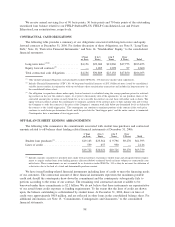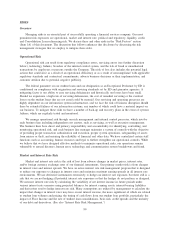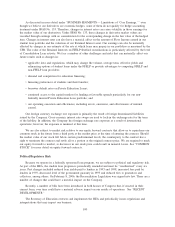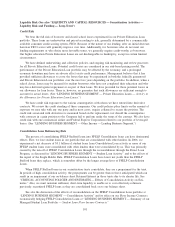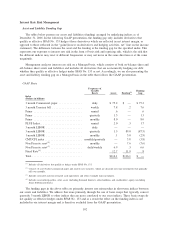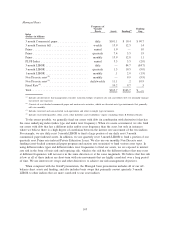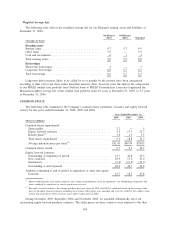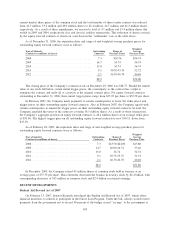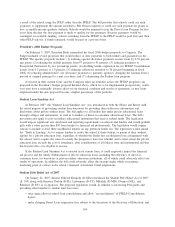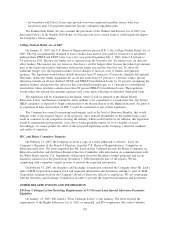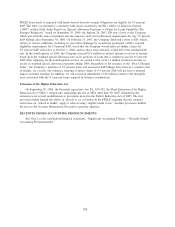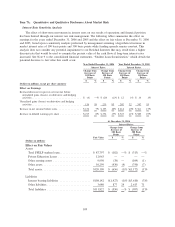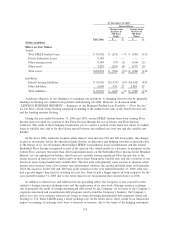Sallie Mae 2006 Annual Report Download - page 101
Download and view the complete annual report
Please find page 101 of the 2006 Sallie Mae annual report below. You can navigate through the pages in the report by either clicking on the pages listed below, or by using the keyword search tool below to find specific information within the annual report.As discussed in more detail under “BUSINESS SEGMENTS — Limitations of ‘Core Earnings,’ ” even
though we believe our derivatives are economic hedges, some of them do not qualify for hedge accounting
treatment under SFAS No. 133. Therefore, changes in interest rates can cause volatility in those earnings for
the market value of our derivatives. Under SFAS No. 133, these changes in derivative market values are
recorded through earnings with no consideration for the corresponding change in the fair value of the hedged
item. Changes in interest rates can also have a material effect on the amount of Floor Income earned in our
student loan portfolio and the valuation of our Retained Interest asset. Our earnings can also be materially
affected by changes in our estimate of the rate at which loans may prepay in our portfolios as measured by the
CPR. The value of the Retained Interests on FFELP Stafford securitizations is particularly affected by the level
of Consolidation Loan activity. We face a number of other challenges and risks that can materially affect our
future results such as changes in:
• applicable laws and regulations, which may change the volume, average term, effective yields and
refinancing options of student loans under the FFELP or provide advantages to competing FFELP and
non-FFELP loan providers;
• demand and competition for education financing;
• financing preferences of students and their families;
• borrower default rates on Private Education Loans;
• continued access to the capital markets for funding at favorable spreads particularly for our non-
federally insured Private Education Loan portfolio; and
• our operating execution and efficiencies, including errors, omissions, and effectiveness of internal
control.
Our foreign currency exchange rate exposure is primarily the result of foreign denominated liabilities
issued by the Company. Cross-currency interest rate swaps are used to lock-in the exchange rate for the term
of the liability. In addition, the Company has foreign exchange rate exposure as a result of international
operations; however, the exposure is minimal at this time.
We are also subject to market risk relative to our equity forward contracts that allow us to repurchase our
common stock in the future from a third party at the market price at the time of entering the contract. Should
the market value of our stock fall below certain predetermined levels, the counterparty to the contract has a
right to terminate the contract and settle all or a portion at the original contract price. We are required to mark
our equity forwards to market, so decreases in our stock price could result in material losses. See “COMMON
STOCK” for more detail on equity forward contracts.
Political/Regulatory Risk
Because we operate in a federally sponsored loan program, we are subject to political and regulatory risk.
As part of the HEA, the student loan program is periodically amended and must be “reauthorized” every six
years. Past changes included reduced loan yields paid to lenders in 1993 and 1998, increased fees paid by
lenders in 1993, decreased level of the government guaranty in 1993 and reduced fees to guarantors and
collectors, among others. On February 8, 2006, the Reconciliation Legislation was signed into law. There are a
number of changes that could have a material impact on the Company.
Recently, a number of bills have been introduced in both houses of Congress that, if enacted in their
current form, over time could have a material adverse impact on our results of operations. See “RECENT
DEVELOPMENTS.”
The Secretary of Education oversees and implements the HEA and periodically issues regulations and
interpretations that may impact our business.
100



